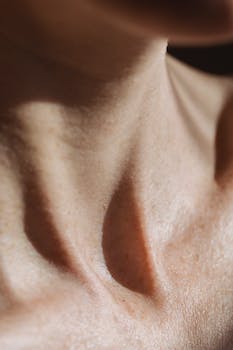

-
Table of Contents
Houdini: The Master of Illusion and Escape.
Introduction
Houdini, born as Erik Weisz in 1874, was a renowned Hungarian-American illusionist and stunt performer. Widely known as "Houdini: The Elusive Escape Artist," he gained fame for his remarkable ability to escape from seemingly impossible situations. Houdini's captivating performances and daring escape acts made him one of the most celebrated magicians of his time, leaving a lasting legacy in the world of magic and entertainment.
The Life and Legacy of Harry Houdini: A Closer Look at the World's Greatest Escape Artist
Houdini: The Elusive Escape Artist
Harry Houdini, born Erik Weisz in Budapest in 1874, is widely regarded as the world's greatest escape artist. His ability to free himself from seemingly impossible situations captivated audiences around the globe. Houdini's life and legacy continue to fascinate people to this day, as his daring feats and unmatched showmanship left an indelible mark on the world of magic and entertainment.
From a young age, Houdini showed a keen interest in magic and escapology. He began his career as a magician, performing card tricks and illusions in small venues. However, it was his talent for escaping from handcuffs, straitjackets, and even water-filled tanks that set him apart from his peers. Houdini's ability to defy the laws of physics and escape from seemingly impossible situations became his trademark.
Houdini's performances were not only physically demanding but also mentally challenging. He would often invite members of the audience to restrain him with handcuffs or straitjackets, only to escape from them effortlessly. His escapes were not mere tricks; they required immense strength, flexibility, and a deep understanding of locks and restraints. Houdini's dedication to his craft was evident in his rigorous training regimen, which included hours of practice and physical conditioning.
One of Houdini's most famous escapes was the Chinese Water Torture Cell. In this act, Houdini was suspended upside down in a water-filled tank, his feet locked in stocks, and his hands handcuffed. The audience watched in awe as Houdini wriggled and contorted his body to free himself from the restraints before running out of breath. This death-defying act became a staple of Houdini's performances and solidified his reputation as the master of escape.
Houdini's success as an escape artist was not limited to his performances on stage. He also took on the challenge of escaping from jails and prisons, often at the request of local authorities. Houdini would willingly submit himself to the strictest security measures, only to outsmart his captors and walk away a free man. These daring escapes from real-life prisons further cemented Houdini's status as the ultimate escape artist.
Beyond his incredible feats, Houdini's legacy extends to his contributions to the field of magic. He was a pioneer in debunking fraudulent spiritualists and mediums, using his knowledge of illusions and trickery to expose their tricks. Houdini was a staunch believer in science and reason, and he dedicated much of his later career to exposing the tricks used by those who claimed to communicate with the dead.
Tragically, Houdini's life was cut short at the age of 52. In 1926, he suffered a ruptured appendix after being punched in the stomach by a fan. Despite undergoing emergency surgery, Houdini passed away on October 31, 1926. His death marked the end of an era in magic and escapology, leaving behind a legacy that continues to inspire and captivate audiences to this day.
In conclusion, Harry Houdini's life and legacy as the world's greatest escape artist are unparalleled. His daring escapes, unmatched showmanship, and dedication to his craft made him a legend in the world of magic and entertainment. Houdini's ability to defy the laws of physics and escape from seemingly impossible situations continues to captivate audiences, even decades after his death. His contributions to the field of magic and his relentless pursuit of truth and reason further solidify his place in history. Harry Houdini will forever be remembered as the elusive escape artist who pushed the boundaries of what was thought possible.
Unraveling the Secrets Behind Houdini's Most Famous Escapes

Houdini: The Elusive Escape Artist
Houdini, the legendary escape artist, captivated audiences with his death-defying stunts and seemingly impossible escapes. His ability to free himself from handcuffs, straitjackets, and even underwater restraints left spectators in awe and wondering how he managed to accomplish such feats. In this section, we will delve into the secrets behind Houdini's most famous escapes, unraveling the mystery that surrounded his incredible talent.
One of Houdini's most renowned escapes was his ability to free himself from handcuffs. He would often invite members of the audience to bring their own handcuffs, challenging them to restrain him securely. With a flick of his wrist and a slight twist of his body, Houdini would effortlessly slip out of the seemingly unbreakable restraints. How did he do it? The secret lay in his meticulous preparation and his deep understanding of locks and restraints. Houdini spent countless hours studying the inner workings of handcuffs, mastering the art of lock picking and developing an uncanny ability to manipulate the mechanisms with precision.
Another mind-boggling escape that Houdini performed was freeing himself from a straitjacket while suspended upside down. This daring feat left audiences gasping in disbelief as they watched him wriggle and contort his body until he was finally free. The secret behind this escape was Houdini's exceptional physical strength and flexibility. He trained rigorously to strengthen his muscles and increase his range of motion, allowing him to maneuver his body in ways that seemed impossible. Additionally, Houdini employed a clever technique of dislocating his shoulders momentarily, giving him the necessary slack to slip out of the straitjacket.
Perhaps one of Houdini's most death-defying escapes was his ability to escape from a water-filled tank. Shackled and submerged, Houdini would hold his breath for an astonishing amount of time before emerging triumphantly from the tank's depths. This escape required not only physical endurance but also mental fortitude. Houdini trained extensively to increase his lung capacity and practiced holding his breath for extended periods. He also developed a technique of slowing down his heart rate, conserving oxygen and allowing him to stay submerged for longer durations. Houdini's ability to control his body and mind under extreme conditions was truly remarkable.
While Houdini's escapes seemed like pure magic, they were, in fact, the result of meticulous planning, rigorous training, and an unwavering determination to push the boundaries of what was considered possible. His escapes were not mere tricks but rather a testament to his unparalleled skill and unwavering commitment to his craft. Houdini's ability to captivate audiences and leave them in awe was a testament to his showmanship and his ability to create an air of mystery and suspense.
In conclusion, Houdini's most famous escapes were not the result of supernatural powers or magic but rather the product of his exceptional skill, physical prowess, and unwavering dedication. His ability to free himself from handcuffs, straitjackets, and water-filled tanks left audiences spellbound and wondering how he managed to accomplish such incredible feats. By unraveling the secrets behind Houdini's most famous escapes, we gain a deeper appreciation for the man behind the legend and the immense talent that made him the elusive escape artist that he was.
Houdini's Influence on Modern Magic and Escape Artists
Houdini: The Elusive Escape Artist
Houdini, the legendary escape artist, continues to captivate audiences even decades after his death. His influence on modern magic and escape artists is undeniable, as he revolutionized the art of escapology and set the bar high for those who followed in his footsteps.
One of Houdini's most significant contributions to modern magic was his ability to create suspense and anticipation in his performances. He understood the importance of building tension and keeping the audience on the edge of their seats. Houdini's daring escapes, such as freeing himself from handcuffs, straitjackets, and even water-filled tanks, left spectators in awe and wondering how he managed to accomplish such feats. This element of surprise and mystery became a hallmark of his performances and continues to be a staple in the repertoire of modern escape artists.
Houdini's influence on modern escape artists can also be seen in the techniques and methods they employ. He was known for his meticulous attention to detail and his relentless pursuit of perfection. Houdini would spend countless hours practicing his escapes, refining his techniques, and pushing the boundaries of what was thought to be possible. This dedication to his craft set a precedent for future escape artists, who strive to emulate his level of skill and precision.
Furthermore, Houdini's commitment to showmanship and entertainment value greatly impacted the way modern escape artists approach their performances. He understood that it was not enough to simply escape from a seemingly impossible situation; he had to engage and entertain his audience throughout the entire process. Houdini would often incorporate elements of drama, humor, and storytelling into his acts, creating a captivating experience for those watching. This emphasis on entertainment value has become a cornerstone of modern escape artistry, with performers incorporating elaborate sets, costumes, and narratives into their shows.
In addition to his technical prowess and showmanship, Houdini's legacy also lies in his relentless pursuit of debunking fraudulent spiritualists and mediums. He was a staunch skeptic and dedicated a significant portion of his career to exposing those who claimed to possess supernatural abilities. Houdini's efforts to expose frauds not only earned him the respect of his peers but also solidified his reputation as a master illusionist and escape artist.
Houdini's influence on modern magic and escape artists extends beyond his performances and techniques. His impact can be felt in the way magic is perceived and appreciated by audiences today. Houdini's ability to blur the lines between reality and illusion challenged conventional notions of what was possible, leaving spectators questioning their own perceptions. This sense of wonder and disbelief continues to be a driving force in the world of magic, as performers strive to create experiences that defy logic and leave audiences spellbound.
In conclusion, Houdini's influence on modern magic and escape artists cannot be overstated. His ability to create suspense, his meticulous attention to detail, his commitment to showmanship, and his relentless pursuit of perfection have shaped the art of escapology as we know it today. Houdini's legacy lives on in the performances of modern escape artists, who continue to push the boundaries of what is possible and captivate audiences with their daring escapes. The impact of Houdini's contributions to the world of magic will undoubtedly be felt for generations to come.
Q&A
1. Who was Houdini?
Houdini was a famous Hungarian-American illusionist and stunt performer known for his incredible escape acts.
2. What were some of Houdini's most famous escape acts?
Houdini's most famous escape acts included freeing himself from handcuffs, straitjackets, and various water-filled containers.
3. When did Houdini live and perform?
Houdini lived from 1874 to 1926 and performed during the late 19th and early 20th centuries.
Conclusion
In conclusion, Houdini was a renowned escape artist known for his incredible ability to free himself from various restraints and confinement. His performances captivated audiences worldwide, as he pushed the boundaries of what seemed possible. Houdini's legacy as the elusive escape artist continues to inspire and fascinate people to this day.












